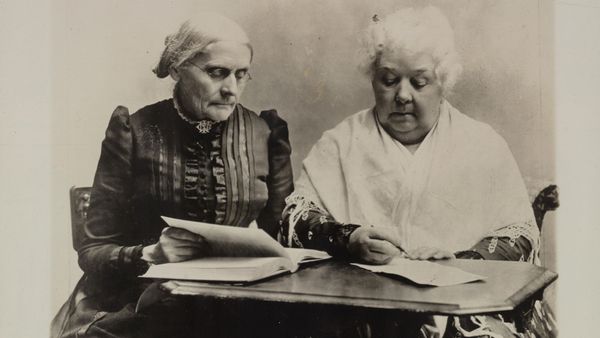
While the United States continues to lag in terms of female leadership statistics (America ranked 81st out of 193 countries as of June 2020, in women's representation in government), one unlikely town became known for unprecedented progressiveness a century ago: Jackson, Wyoming. In 1920 — yes, the same year the 19th Amendment first granted women the right to vote — an all-female ticket nicknamed the "petticoat rulers" established order in the Wild West town.
"This may be a bit dramatic, but I often say that Jackson could have very easily faded into the landscape in the early 20th century if not for these women," Morgan Albertson Jaouen, executive director of the Jackson Hole Historical Society & Museum, writes via email. "This was a rugged place and incredibly difficult to settle. While Jackson had a strong community where everyone helped each other out, there was very little emphasis on government and civic responsibility."
Advertisement
It may be tough to believe an all-female government ruled a small town in early 20th century America when sexism still remains a major barrier in modern politics, but on May 11, 1920, Jackson elected Grace Miller as mayor and Rose Crabtree, Mae Deloney, Faustina Haight and Genevieve Van Vleck as council members. The five women claimed victory over an all-male roster, and Crabtree even beat out her husband, Henry. This landmark win was no accident, either: The election drew the most voters the town had seen at that point, and in many cases, the women dominated their male opponents by a margin of 2-to-1.
While Oskaloosa, Kansas, and Kanab, Utah, had already elected all-female town councils in 1888 and 1912, respectively, the election was a major turning point for Jackson. "The all-women town council of 1920 stepped up and shaped the town into the place we know and love today — they graded the streets, they expanded electrical service and installed street lamps, they established the first town cemetery, and built the town's budget to be able to continue serving community members," Jaouen says.
According to a 1922 article from The Delineator magazine, there was only $200 in town coffers when the women took office, due to uncollected fines and taxes. As the article states, "they went out personally and collected every cent due the town from those who ignored the notices. Before the end of a fortnight there was $2,000 in the treasury."
Things didn't necessarily all start out with a flashy bang, however, according to Jouen. "A funny story: I had always heard that the all-women town council had 'formalized' town square, and until recently, I assumed that meant creating the park-like square we see today," she says. "But what it actually meant was that these 'councilmen' (as they called themselves in official town documents) simply prohibited the grazing of cattle on town square. You have to start somewhere!"
Advertisement

